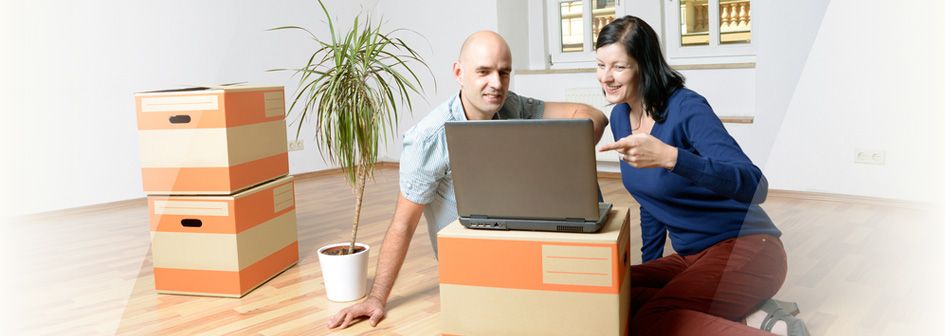Mastering the Art of Packing for Your Big Move
Posted on 03/06/2025
Mastering the Art of Packing for Your Big Move
Moving to a new home is both an exciting adventure and an overwhelming task. One crucial aspect that determines the ease and success of your move is the art of packing. Efficient packing ensures your belongings reach your new abode safely and helps you start your next chapter stress-free. In this comprehensive guide, we'll unravel the best tips, tricks, and proven strategies for mastering the art of packing for your big move.
Why Is Packing Properly So Important?
Failing to pack properly can lead to broken items, increased moving costs, and wasted time. On the other hand, effective packing saves you money, time, and unnecessary stress. When you master the art of packing for your big move, you can look forward to unpacking in an organized, efficient manner.
Risks of Poor Packing
- High risk of breakage and loss of precious items
- Increased moving expenses due to poor organization
- Longer time spent unpacking and searching for things
- Potential physical strain or injury from overfilled or unbalanced boxes

Pre-Packing: Laying the Foundation for Success
Before you even tape your first box, pre-packing preparation is essential. A strategic approach prevents chaos and sets the stage for a smooth move.
Declutter Before You Pack
Start by decluttering your home. There's no better time than a big move to sort through your possessions. Be ruthless, yet thoughtful.
- Keep: Items you use regularly or that have significant sentimental value.
- Donate: Clothes, books, and furniture in good condition that you no longer need.
- Sell: Valuable items you want to let go of (try online marketplaces).
- Recycle or Toss: Broken, outdated, or unusable objects.
Tip: Organize a garage sale or use online platforms to turn unwanted items into extra cash.
Gather Your Packing Supplies
Having the right supplies is the foundation of mastering the art of moving and packing. Gather these essentials before you start:
- Sturdy Boxes: Mix of small, medium, and large sizes
- Packing Tape: Heavy-duty for secure sealing
- Bubble Wrap: For fragile items
- Packing Paper: To cushion and wrap breakables
- Markers: For labeling boxes
- Labels or Stickers: For color-coding rooms or priorities
- Scissors and Box Cutters: For easier access and opening
- Furniture Covers and Dollies: If moving heavy items
Pro tip: Check with local businesses or friends for free or discounted boxes.
Room-by-Room Packing Strategies
Kitchen Packing Tips
- Wrap fragile dishes and glasses individually with bubble wrap or packing paper.
- Use small boxes for heavier items like plates and glasses.
- Bundle cutlery in sets with a rubber band and wrap in kitchen towels.
- Seal food containers tightly and avoid packing perishables unless moving locally.
- Mark boxes as "Fragile" and indicate "This Side Up" to prevent breakage.
Bedroom Packing
- Use wardrobe boxes for hanging clothes to keep them wrinkle-free.
- Pack folded clothes in suitcases or large boxes. Roll clothes to save space.
- Wrap jewelry in tissue or bubble wrap; use pillboxes for small items.
- Disassemble furniture if possible, keeping screws and small parts in labeled bags.
Living Room and Electronics
- Use original boxes for electronics whenever possible.
- Take photos of cable setups before disconnecting to simplify reassembly.
- Wrap TVs and monitors with blankets or bubble wrap; do not lay flat.
- Pack books vertically in small boxes to prevent damage.
Bathroom Essentials
- Seal all liquids in plastic bags to prevent leaks.
- Pack an essentials bag with daily hygiene items you'll need immediately.
- Dispose of expired medicines and toiletries.
Garage and Outdoor Items
- Drain fuel from equipment like lawnmowers.
- Wrap sharp or metal objects in towels or bubble wrap.
- Group small items (e.g., garden tools) together and secure with tape or rope.
Advanced Packing Techniques for a Stress-Free Move
If you want to truly master the art of packing for your big move, employ these expert techniques used by professionals:
- Pack by Weight: Place heavier items at the bottom of each box and lighter ones on top.
- Fill Gaps: Use towels, clothes, or packing paper in empty spaces to prevent shifting.
- Label Everything: Write the contents and destination room on every box.
- Color-Code: Assign a color to each room and use stickers or markers for quick identification.
- Inventory List: Keep a master list of all boxes and their contents. Consider using a spreadsheet or moving app.
Tip: Number your boxes so you'll notice if any go missing during the move.
How to Handle Fragile and Valuable Items
Special care should be taken with breakables, artwork, and valuables:
- Double-wrap delicate items and use sturdy boxes marked "Fragile."
- Photograph valuables before packing as documentation for insurance.
- Transport irreplaceable items like jewelry, small electronics, or family heirlooms personally, rather than placing them on a moving truck.
Packing Timeline: When and What to Pack
One cornerstone of the art of efficient moving and packing is timing. Here's a recommended timeline:
- 6-8 Weeks Before: Start decluttering and sourcing packing materials.
- 4-6 Weeks Before: Begin packing seasonal and rarely used items.
- 3 Weeks Before: Pack decorative items, books, and guest rooms.
- 2 Weeks Before: Tackle the kitchen, living room, and storage spaces.
- 1 Week Before: Pack daily-use items except essentials, finish remaining rooms.
- 2 Days Before: Pack an essentials box or bag with clothes, toiletries, chargers, and important documents.
- Moving Day: Double-check closets, cabinets, and storage spots for overlooked items.
Planning ahead ensures a smooth, less stressful move!
Labeling: The Secret Weapon in Packing for a Big Move
One aspect often overlooked when packing for a move is labeling. A well-labeled box can save hours when you arrive.
- Use clear, bold writing with permanent markers.
- Include both room and contents (e.g., "Kitchen - Pots & Pans").
- Add handling instructions such as "Fragile", "Heavy", or "This Side Up."
- Consider a color or numbering system for added organization.
Pro tip: Place labels on the sides, not the tops, so you can read them when boxes are stacked.
Packing Mistakes to Avoid During Your Big Move
- Overfilling Boxes: This can cause breakage or injury; stick to 50 lbs per box if possible.
- Forgetting to Label: Unlabeled boxes = confusion and chaos.
- Poorly Secured Boxes: Use plenty of tape--especially under heavy boxes.
- Packing Perishable Foods: Unless you're moving locally, donate or discard to avoid messes.
- Ignoring Valuable Paperwork: Keep passports, leases, and sensitive documents with you, not in the moving truck.
The First Night Survival Kit
When you reach your new home after a long day, the last thing you'll want is to dig through boxes for your toothbrush or pajamas. Prepare a first night kit for each family member:
- Basic toiletries (toothbrush, toothpaste, soap, shampoo)
- Phone and device chargers
- A change of clothes
- Bedding and pillow
- Snacks and water bottles
- Medications and basic first-aid items
- Essential documents (IDs, keys, lease agreement)
Mistakes to Avoid When Packing for a Move
Even the most organized people make mistakes. Here are the most common pitfalls:
- Packing without a strategy leads to unnecessary stress and confusion.
- Underestimating the scope of packing can cause a last-minute rush.
- Neglecting to protect fragile or valuable items makes breakage more likely.
- Not taking measurements could mean furniture won't fit into your new space.
- Failing to arrange help or transport in advance can disrupt your moving schedule.
Frequently Asked Questions about Packing for a Move
How far in advance should you start packing?
Ideally, you should start the packing process 6-8 weeks before your move, especially for large homes or families.
What not to pack in a moving truck?
Never pack valuables, important documents, perishable foods, medications, plants, or hazardous materials in the moving truck. Keep these with you.
How do you pack efficiently for a move?
Pack by room, start early, use quality materials, label boxes, and keep an inventory list. Mastering the art of packing for your big move is all about planning and organization.

Final Checklist: Mastering Your Big Move
- Declutter and downsize before packing
- Gather quality packing supplies in advance
- Disassemble furniture and organize small parts
- Pack room by room, labeling every box clearly
- Use advanced techniques for fragile or valuable items
- Prepare a first night essentials kit
- Stay on schedule with a packing timeline
- Double-check your old home before leaving
- Keep important documents and valuables with you
Conclusion: The True Art of Packing for Your Move
Packing for a move doesn't have to be a daunting, dreaded task. By starting early, staying organized, and following the proven strategies outlined here, you'll not only protect your belongings but also make settling into your new home a breeze.
Remember: Each move is unique, but by mastering the art of packing for your big move, you can ensure a successful, stress-free relocation. So gather your boxes, make a plan, and start your journey on the right foot!
For more moving tips, checklists, and inspiration, bookmark this article or share it with friends preparing for their own big move. Happy packing!







.png)
.png)